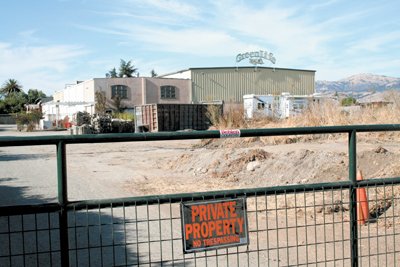In 2018, the city of Gilroy paid its police officers $248,000 in extra duty pay to provide security at the Gilroy Garlic Festival. The following year, city spending on festival security decreased by more than $67,000—a 27 percent drop.
Salaries for firefighters at the festival increased nearly 30 percent in 2019, from $18,542 to $24,051, according to data provided by city officials.
Police worked 1,124 hours at the 2018 festival, and just 871 hours at the 2019 festival. A report from the city clerk’s office showed that hours worked by police on the first day of the festival decreased by more than 50 from 2018 to 2019. On the last day of the festival, police worked about 130 fewer hours as security in 2019 than in 2018.
The data was provided in response to a public records request from the Gilroy Dispatch, after the city reported that the total bill for city services provided to the Garlic Festival showed a significant drop from the previous year.
The city’s contract with the festival requires the festival to reimburse the city for a portion of the salaries of police, fire and public works staff who work extra duty at the festival. The city each November bills the festival for just 45 percent of the actual public safety costs for the annual event.
Repeated requests for an explanation of the drop in spending this year were ignored or rejected by the city, citing either an ongoing criminal investigation or pending litigation.
The city also declined to identify whether a city administrator or department was responsible for making a decision to cut back on security at the festival, or whether the Garlic Festival staff requested cuts in festival security—on the last day in particular—to save money.
The city’s contract with the festival requires the festival to reimburse the city for a portion of the salaries of police, fire and public works staff who work extra duty at the festival. The city each November bills the festival for just 45 percent of the actual public safety costs for the annual event.
As the 2019 festival drew to a close, in the festival’s last half-hour, a staccato burst from a semiautomatic rifle sprayed from the northeast corner toward an inflated slide and vendor tents, sending hundreds of men, women and children running for cover. Santino Legan had cut through a chain link fence a few yards away, carrying more than 200 rounds of ammunition before opening fire.
Police officers felled Legan with multiple shots before he turned his weapon on himself, ending 90 seconds of terror.
Three months later, security questions would emerge: A lawyer for five of the 17 shooting victims said lax security—an unmonitored chain-link fence in particular—enabled the shooter to make his way undetected to his killing ground. The victims sued the festival for not taking adequate measures to keep festival-goers safe.
The Gilroy Garlic Festival Association and city police offered no explanation or rebuttal to the accusations.
For months, even before the lawsuit, the association never returned phone calls or answered questions. When the city produced documents of the detailed security spending at the festival in 2018 and 2019 in response to a public records request, it continued to decline to comment.
This month 11 shooting victims filed claims of lax security, stating that the city must share responsibility for the incident with the festival association.














